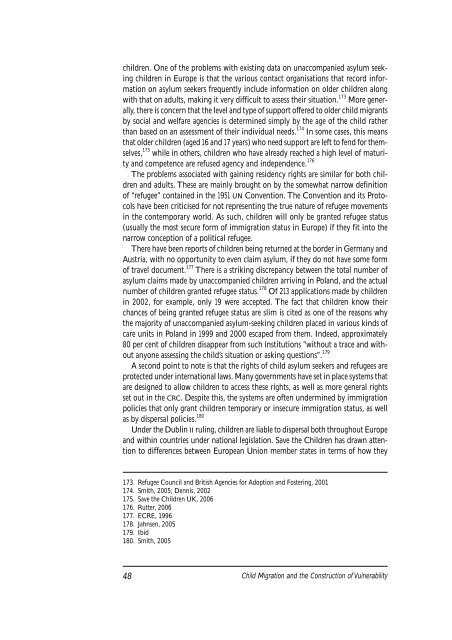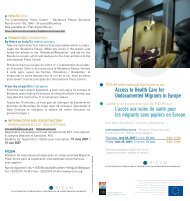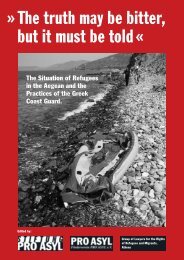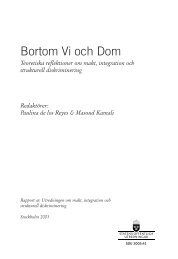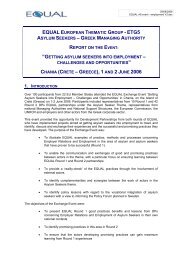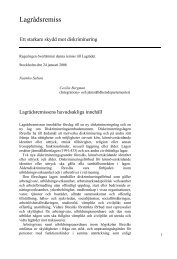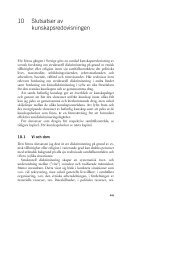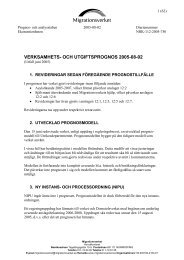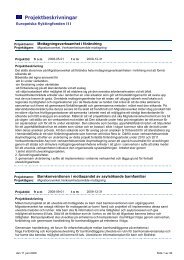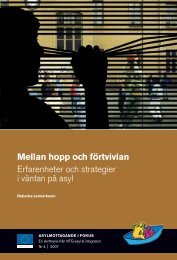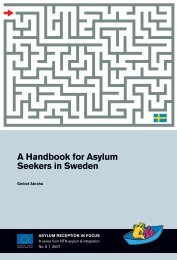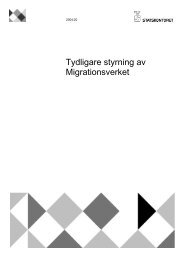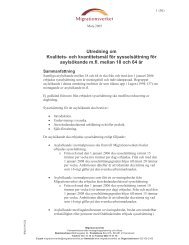and the Construction of Vulnerability - Child Trafficking
and the Construction of Vulnerability - Child Trafficking
and the Construction of Vulnerability - Child Trafficking
You also want an ePaper? Increase the reach of your titles
YUMPU automatically turns print PDFs into web optimized ePapers that Google loves.
children. One <strong>of</strong> <strong>the</strong> problems with existing data on unaccompanied asylum seeking<br />
children in Europe is that <strong>the</strong> various contact organisations that record information<br />
on asylum seekers frequently include information on older children along<br />
with that on adults, making it very difficult to assess <strong>the</strong>ir situation. 173 More generally,<br />
<strong>the</strong>re is concern that <strong>the</strong> level <strong>and</strong> type <strong>of</strong> support <strong>of</strong>fered to older child migrants<br />
by social <strong>and</strong> welfare agencies is determined simply by <strong>the</strong> age <strong>of</strong> <strong>the</strong> child ra<strong>the</strong>r<br />
than based on an assessment <strong>of</strong> <strong>the</strong>ir individual needs. 174 In some cases, this means<br />
that older children (aged 16 <strong>and</strong> 17 years) who need support are left to fend for <strong>the</strong>mselves,<br />
175 while in o<strong>the</strong>rs, children who have already reached a high level <strong>of</strong> maturity<br />
<strong>and</strong> competence are refused agency <strong>and</strong> independence. 176<br />
The problems associated with gaining residency rights are similar for both children<br />
<strong>and</strong> adults. These are mainly brought on by <strong>the</strong> somewhat narrow definition<br />
<strong>of</strong> “refugee” contained in <strong>the</strong> 1951 UN Convention. The Convention <strong>and</strong> its Protocols<br />
have been criticised for not representing <strong>the</strong> true nature <strong>of</strong> refugee movements<br />
in <strong>the</strong> contemporary world. As such, children will only be granted refugee status<br />
(usually <strong>the</strong> most secure form <strong>of</strong> immigration status in Europe) if <strong>the</strong>y fit into <strong>the</strong><br />
narrow conception <strong>of</strong> a political refugee.<br />
There have been reports <strong>of</strong> children being returned at <strong>the</strong> border in Germany <strong>and</strong><br />
Austria, with no opportunity to even claim asylum, if <strong>the</strong>y do not have some form<br />
<strong>of</strong> travel document. 177 There is a striking discrepancy between <strong>the</strong> total number <strong>of</strong><br />
asylum claims made by unaccompanied children arriving in Pol<strong>and</strong>, <strong>and</strong> <strong>the</strong> actual<br />
number <strong>of</strong> children granted refugee status. 178 Of 213 applications made by children<br />
in 2002, for example, only 19 were accepted. The fact that children know <strong>the</strong>ir<br />
chances <strong>of</strong> being granted refugee status are slim is cited as one <strong>of</strong> <strong>the</strong> reasons why<br />
<strong>the</strong> majority <strong>of</strong> unaccompanied asylum-seeking children placed in various kinds <strong>of</strong><br />
care units in Pol<strong>and</strong> in 1999 <strong>and</strong> 2000 escaped from <strong>the</strong>m. Indeed, approximately<br />
80 per cent <strong>of</strong> children disappear from such institutions “without a trace <strong>and</strong> without<br />
anyone assessing <strong>the</strong> child’s situation or asking questions”. 179<br />
A second point to note is that <strong>the</strong> rights <strong>of</strong> child asylum seekers <strong>and</strong> refugees are<br />
protected under international laws. Many governments have set in place systems that<br />
are designed to allow children to access <strong>the</strong>se rights, as well as more general rights<br />
set out in <strong>the</strong> CRC. Despite this, <strong>the</strong> systems are <strong>of</strong>ten undermined by immigration<br />
policies that only grant children temporary or insecure immigration status, as well<br />
as by dispersal policies. 180<br />
Under <strong>the</strong> Dublin II ruling, children are liable to dispersal both throughout Europe<br />
<strong>and</strong> within countries under national legislation. Save <strong>the</strong> <strong>Child</strong>ren has drawn attention<br />
to differences between European Union member states in terms <strong>of</strong> how <strong>the</strong>y<br />
173. Refugee Council <strong>and</strong> British Agencies for Adoption <strong>and</strong> Fostering, 2001<br />
174. Smith, 2005; Dennis, 2002<br />
175. Save <strong>the</strong> <strong>Child</strong>ren UK, 2006<br />
176. Rutter, 2006<br />
177. ECRE, 1996<br />
178. Jahnsen, 2005<br />
179. Ibid<br />
180. Smith, 2005<br />
48<br />
<strong>Child</strong> Migration <strong>and</strong> <strong>the</strong> <strong>Construction</strong> <strong>of</strong> <strong>Vulnerability</strong>


